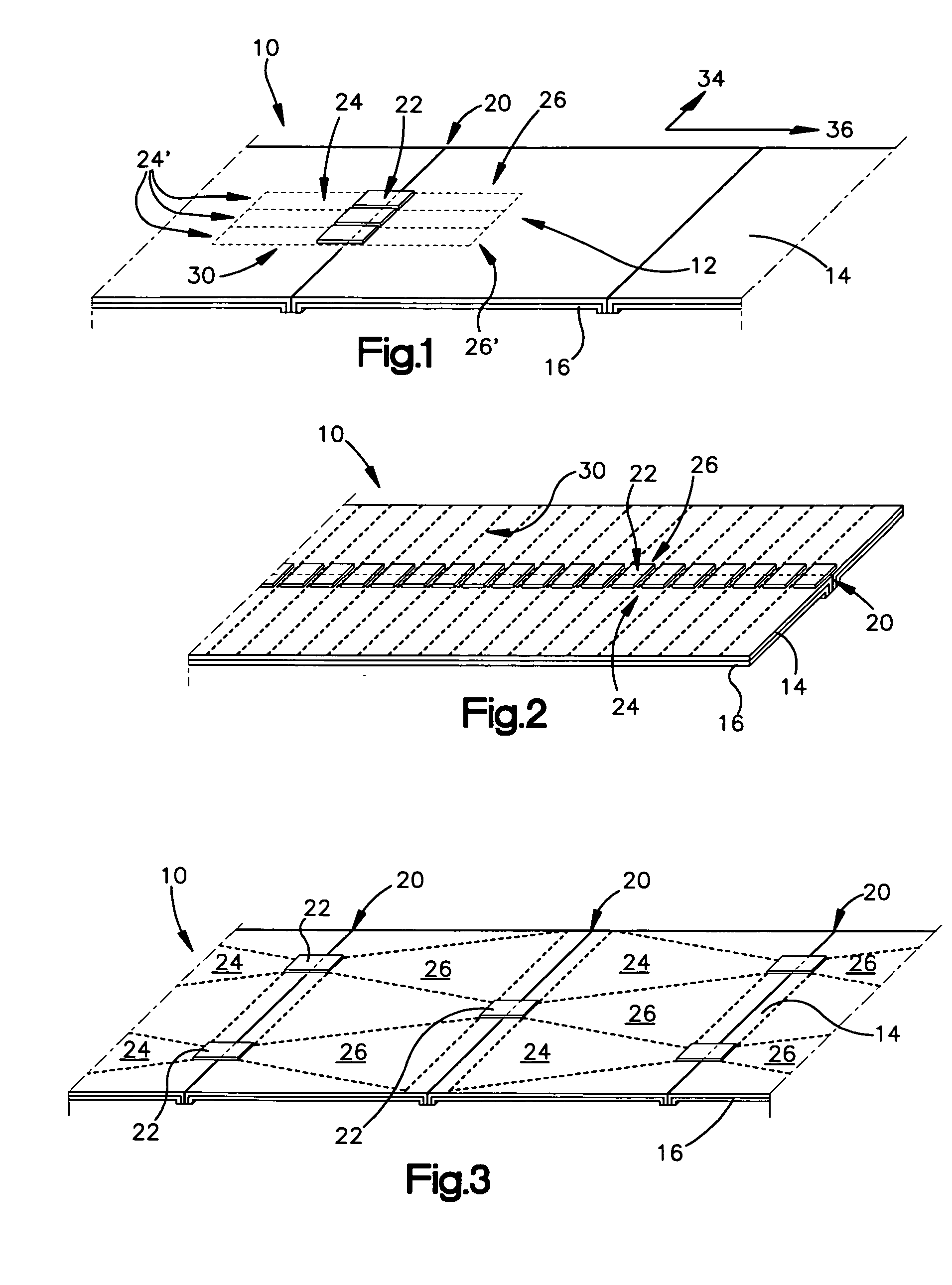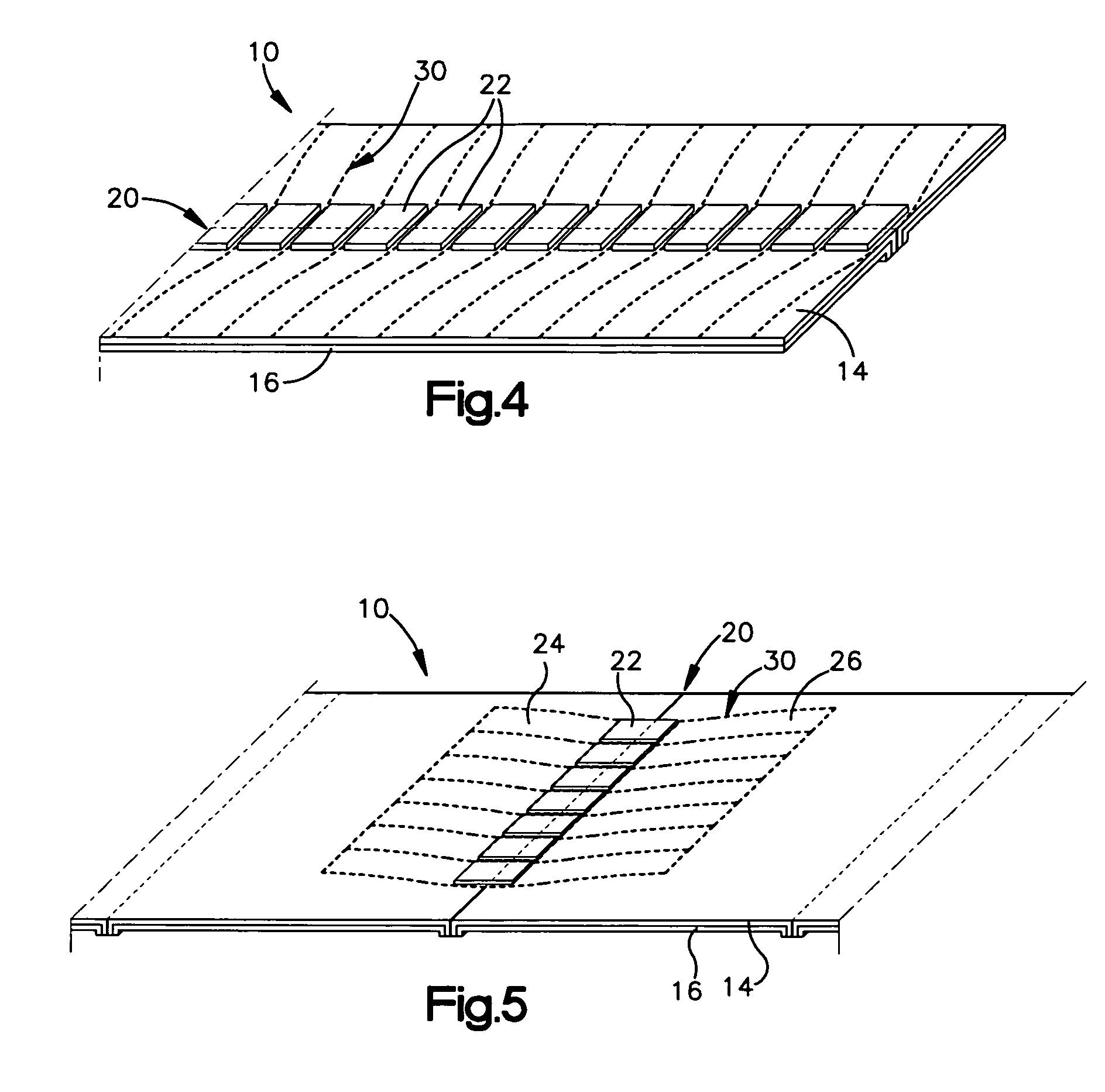Low cost method of producing radio frequency identification tags with straps without antenna patterning
a radio frequency identification and strap technology, applied in the direction of burglar alarm mechanical actuation, burglar alarm by hand-held articles removal, instruments, etc., can solve the problems of low cost, insufficient resolution of conventional patterning, etching and printing methods, and inability to provide the engineered performance of the device, etc., to achieve the effect of low cos
- Summary
- Abstract
- Description
- Claims
- Application Information
AI Technical Summary
Benefits of technology
Problems solved by technology
Method used
Image
Examples
Embodiment Construction
[0062]A web of radio frequency identification (RFID) devices includes a conductive layer atop an insulating layer, the conductive layer having one or more apertures therein. RFID chips or straps are electrically coupled to portions of the conductive layer on either side of one or more apertures, for use as antennas when the RFID devices are separated from one another, as by cutting.
[0063]The apertures may be formed by folding or creasing portions of the web, and removing parts of the folded or creased portion as set forth herein. The apertures may also be formed by a selective masking and evaporation process, or by any other suitable means. There may be a single aperture in a longitudinal direction of the web, or multiple apertures in a longitudinal or transverse direction of the web. The apertures may fully separate the conductive material on either side, or alternatively may only partially separate the conductive material, leaving one or more conductive bridges linking the conduct...
PUM
| Property | Measurement | Unit |
|---|---|---|
| thickness | aaaaa | aaaaa |
| conductive | aaaaa | aaaaa |
| dielectric | aaaaa | aaaaa |
Abstract
Description
Claims
Application Information
 Login to View More
Login to View More - R&D
- Intellectual Property
- Life Sciences
- Materials
- Tech Scout
- Unparalleled Data Quality
- Higher Quality Content
- 60% Fewer Hallucinations
Browse by: Latest US Patents, China's latest patents, Technical Efficacy Thesaurus, Application Domain, Technology Topic, Popular Technical Reports.
© 2025 PatSnap. All rights reserved.Legal|Privacy policy|Modern Slavery Act Transparency Statement|Sitemap|About US| Contact US: help@patsnap.com



